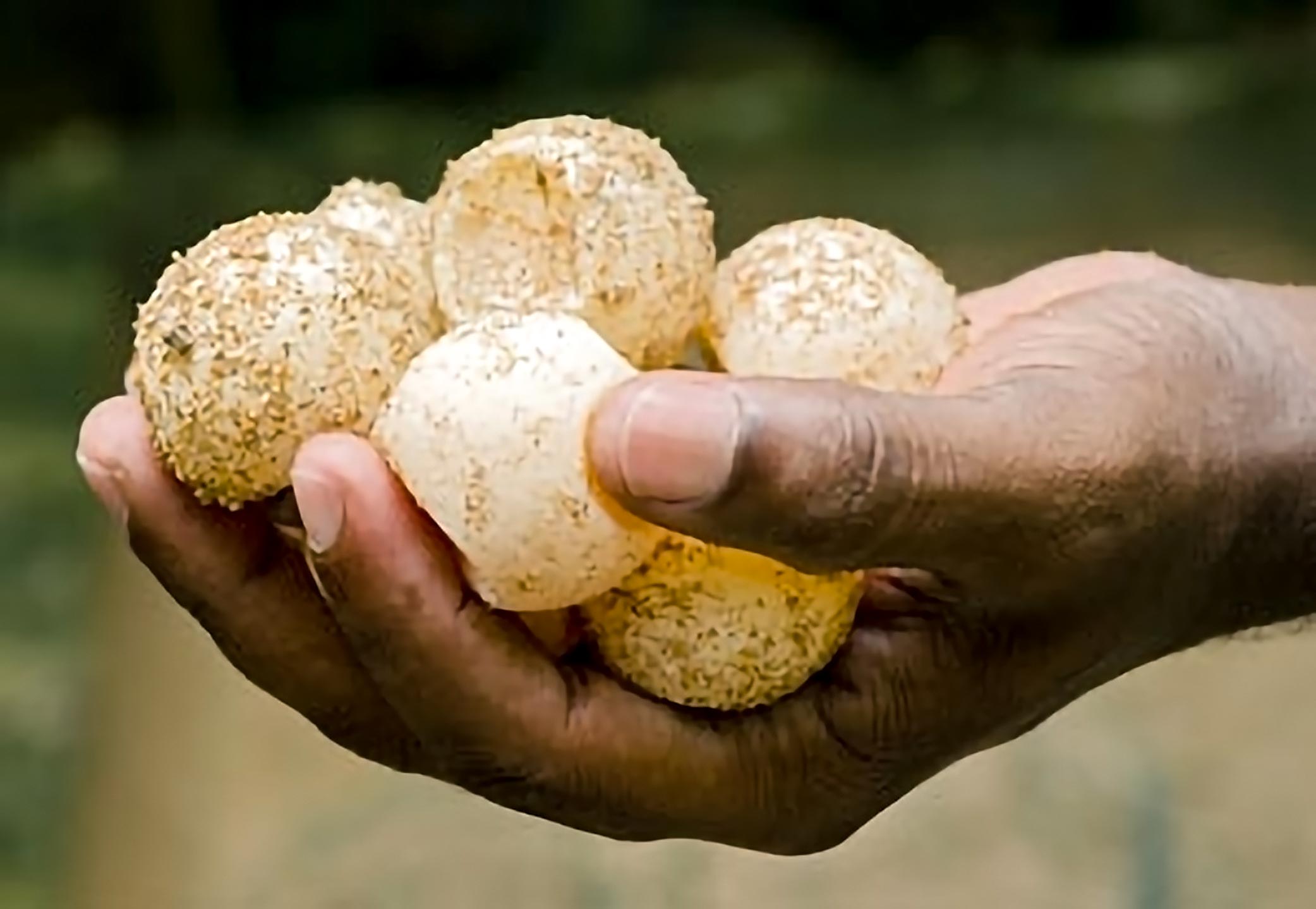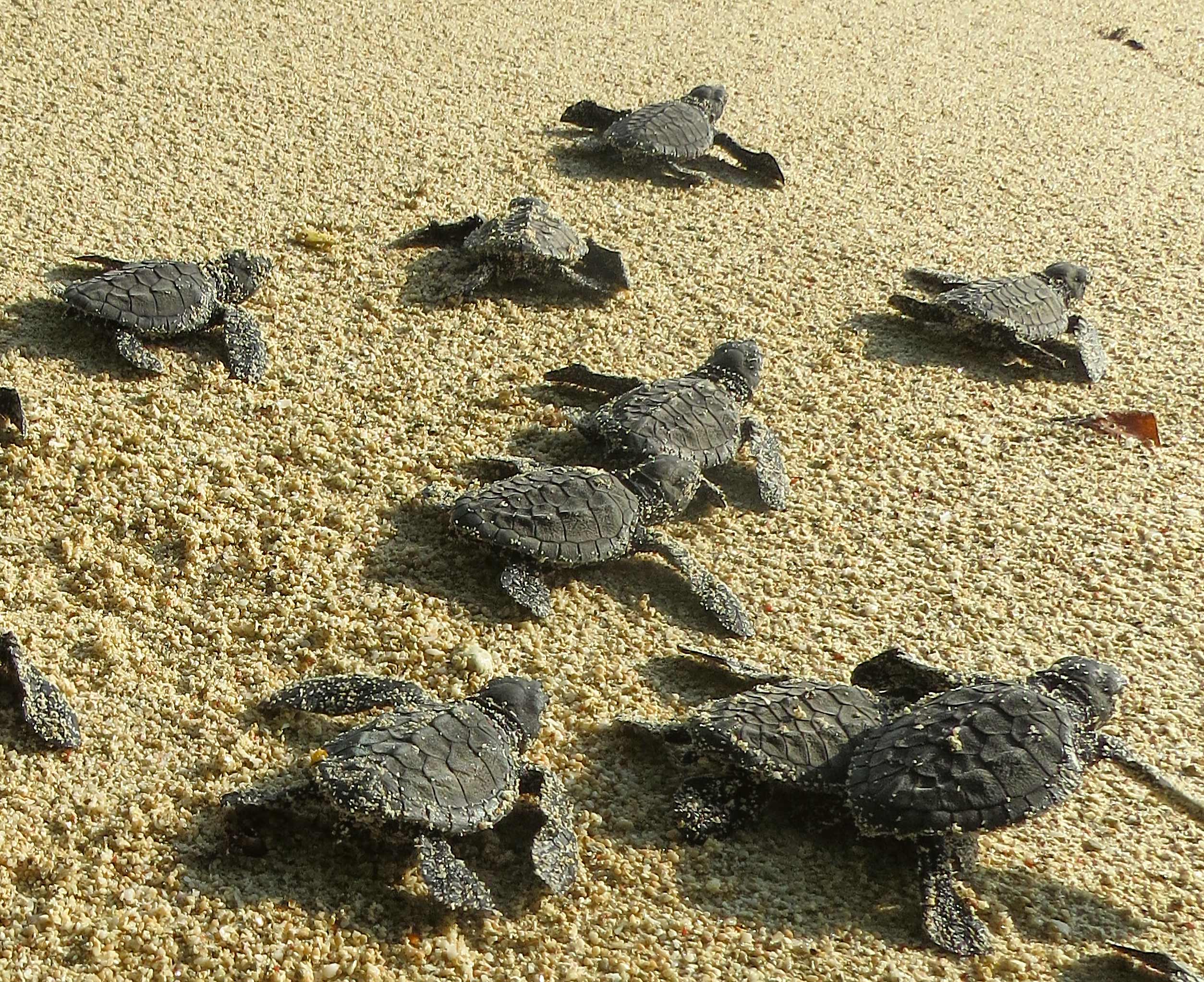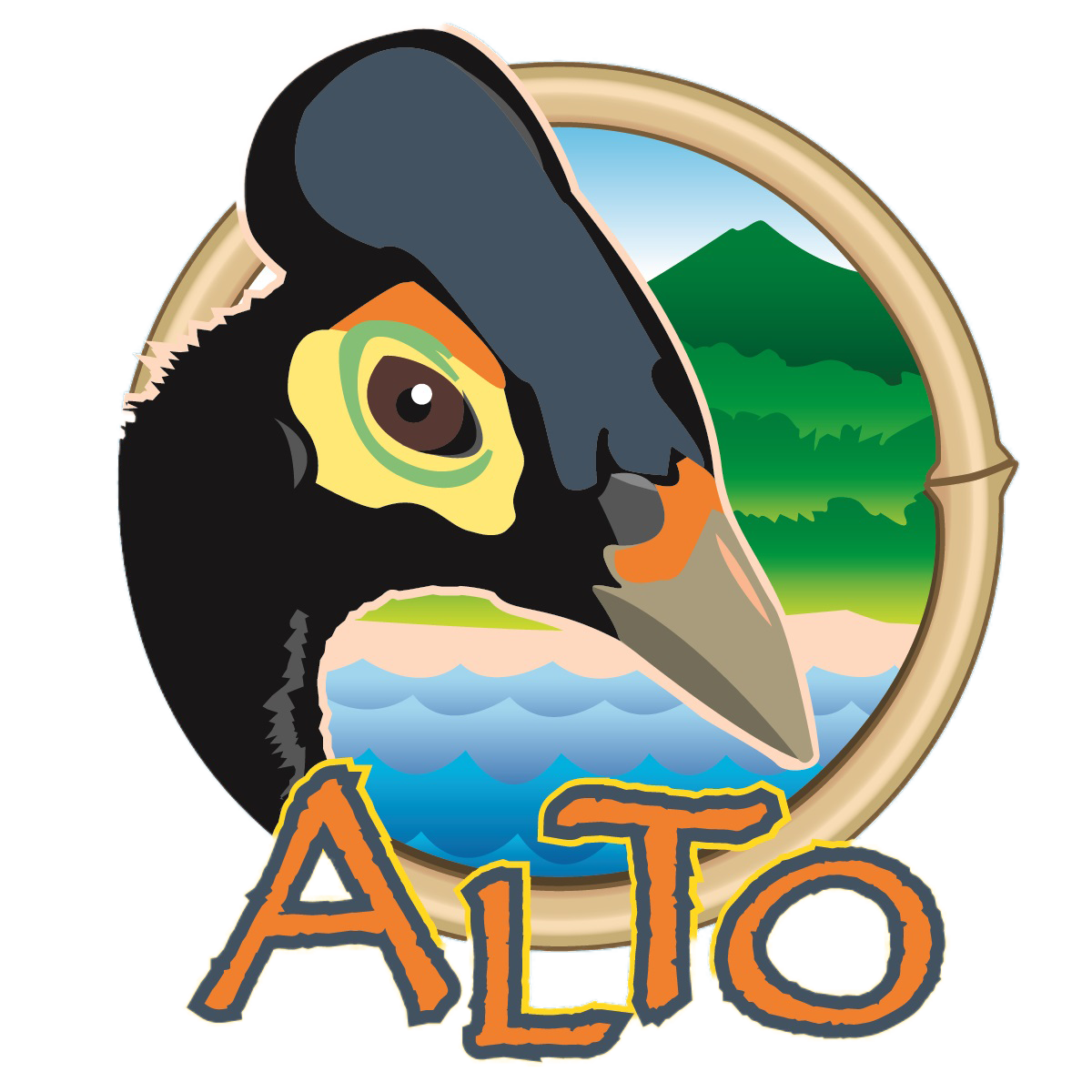Sea Turtles
Sea Turtles
Community-based sea turtle conservation
Working side by side with local villagers, AlTo patrols sea turtle nesting beaches and protects sea turtle nests at two of the Tompotika region’s key turtle nesting areas: the beaches surrounding Teku/Toweer and Taima villages.
Three species of sea turtles nest in this area: Green Turtles, Chelonia mydas; Olive Ridley Turtles, Lepidochelys olivacea; and Hawksbill Turtles, Eretmochelys imbricata. A fourth species, the Leatherback Turtle, Dermochelys coriacea, nested here until about a decade ago, but, tragically, it is gone now.



Protected by Law – And Now Increasingly, In Practice
In danger of extinction worldwide, sea turtles have been fully protected under Indonesian law since 1990, but these laws have seldom been enforced, and poaching of sea turtle adults and eggs is common and widespread in the Tompotika area, as it is in much of the country. Though sea turtles face other threats as well–such as fishing bycatch, marine plastic debris, inappropriate beach development, and climate change–in this region, poaching of adult turtles and nests by humans is the “killer threat” causing the turtles’ decline.
But happily, that is now changing–with AlTo’s help, Tompotikans are now making an effort to protect the area’s remaining sea turtles lest they, too, disappear as the Leatherback did a few years ago.
AlTo’s sea turtle program uses a grassroots approach to halting poaching and building local support for sea turtle conservation:
- Nesting Beach Patrols – AlTo staff pair with local villagers – many of them former poachers themselves – on nightly patrols of nesting beaches during the sea turtle season (February through August), protecting female turtles and their nests from poachers.
Nest Protection – Nests that cannot be adequately protected from poachers in situ are carefully moved to a safe place where AlTo assists villagers in guarding them until hatching. Villagers gain employment and skills in safeguarding these nests until the new hatchlings emerge, whereupon they are immediately released to carry out the ancient ritual of making their own way to the open sea.
- Public Awareness – Since 2008, AlTo has been carrying out an active Sea Turtle Conservation Awareness program in Tompotika schools and villages as part of our Awareness Campaign. Since that time, AlTo staff have brought the conservation message at least once to every one of over 100 schools in the Tompotika region.
- Law Enforcement Outreach – Beginning in 2012, and in partnership with government agencies, AlTo has sponsored a program of targeted outreach to law enforcement personnel in the Tompotika region, with a special focus on enforcement of laws protecting sea turtles and forbidding trade in their products. Under this program, local law enforcement personnel are gaining new knowledge, tools, procedures, and motivation to discourage violation of wildlife laws.
Working Patiently Toward Recovery
Sea turtles tend to be on a long, slow time-frame–they’ve been swimming the world’s oceans for over 100 million years. And, depending on the species, it may take 15-30 years for a sea turtle hatchling to grow to adulthood, so populations cannot recover quickly.
Likewise, the behavioral and cultural changes that will be required so that sea turtles will be safe from uncontrolled trade and consumption by humans will take time. AlTo is committed to the long haul.
To date, AlTo has helped save hundreds of adult sea turtles and tens of thousands of eggs from poaching. We will continue to work cooperatively with local Tompotikans to ensure that healthy sea turtle populations will continue to grace Tompotika’s waters and nest on Tompotika beaches for generations to come.

Portraits of Conservation: Roma
Roma Bunsung of Taima village manages the AlTo-sponsored sea turtle hatchery there. Every day during the turtle nesting season, he patrols beaches, rescues and receives eggs, re-buries them safely inside the hatchery enclosure, and looks after them for the 6-8 weeks of natural incubation. When the tiny hatchlings emerge, he immediately releases them to make their way to the open ocean. Says Roma, “I would be very, very happy if I saw one of my babies that I looked after come back to appear before me again. I’d be very happy!”

what you can do
You can help support AlTo’s sea turtle conservation efforts.
Please click here to donate to AlTo to help support the cost of patrolling beaches, safeguarding turtle nests, training villagers, and encouraging law enforcement.
Be Aware
Don’t buy sea turtle products.
Please remember when in Indonesia, or anywhere: if ever you encounter sea turtle eggs, meat, or other products, such as turtle shell jewelry for sale, do not buy or consume them! Taking, buying, or trading in any sea turtle products is forbidden by Indonesian and international law, and violators are subject to substantial fines or jail. What’s more, such trade is exactly what is driving the overexploitation of sea turtles in Indonesia today, and pushing them toward extinction.
Dispose of trash properly
Your trash–especially plastic trash–may end up in the ocean if it is not disposed of properly, and there it harms wildlife. Every year thousands of sea turtles die from becoming entangled in plastic debris, or from eating plastic bags, mistaking them for jellyfish. Please minimize your use of plastic overall, and ensure that all garbage that you produce is recycled or safely disposed of.
Be respectful of nesting sea turtles
If visiting sea turtle nesting beaches, remember that you are literally “walking on eggshells.” During the day, tread carefully and avoid anything that might disturb buried nests. During the night, keep lights off as much as possible, and do not approach nesting females–even the slightest disturbance can cause her to abort the egg-laying process. Only if she is entirely “entranced” with her nest complete and egg-laying already fully underway may slow, quiet approach be attempted. Under all circumstances, keep your distance, move slowly, and keep noise and lights low.
If you are lucky enough to witness a sea turtle nest hatching, extinguish all lights, and do not interfere with hatchlings’ run to the sea–their proper orientation depends on this early crossing of their natal beach.
